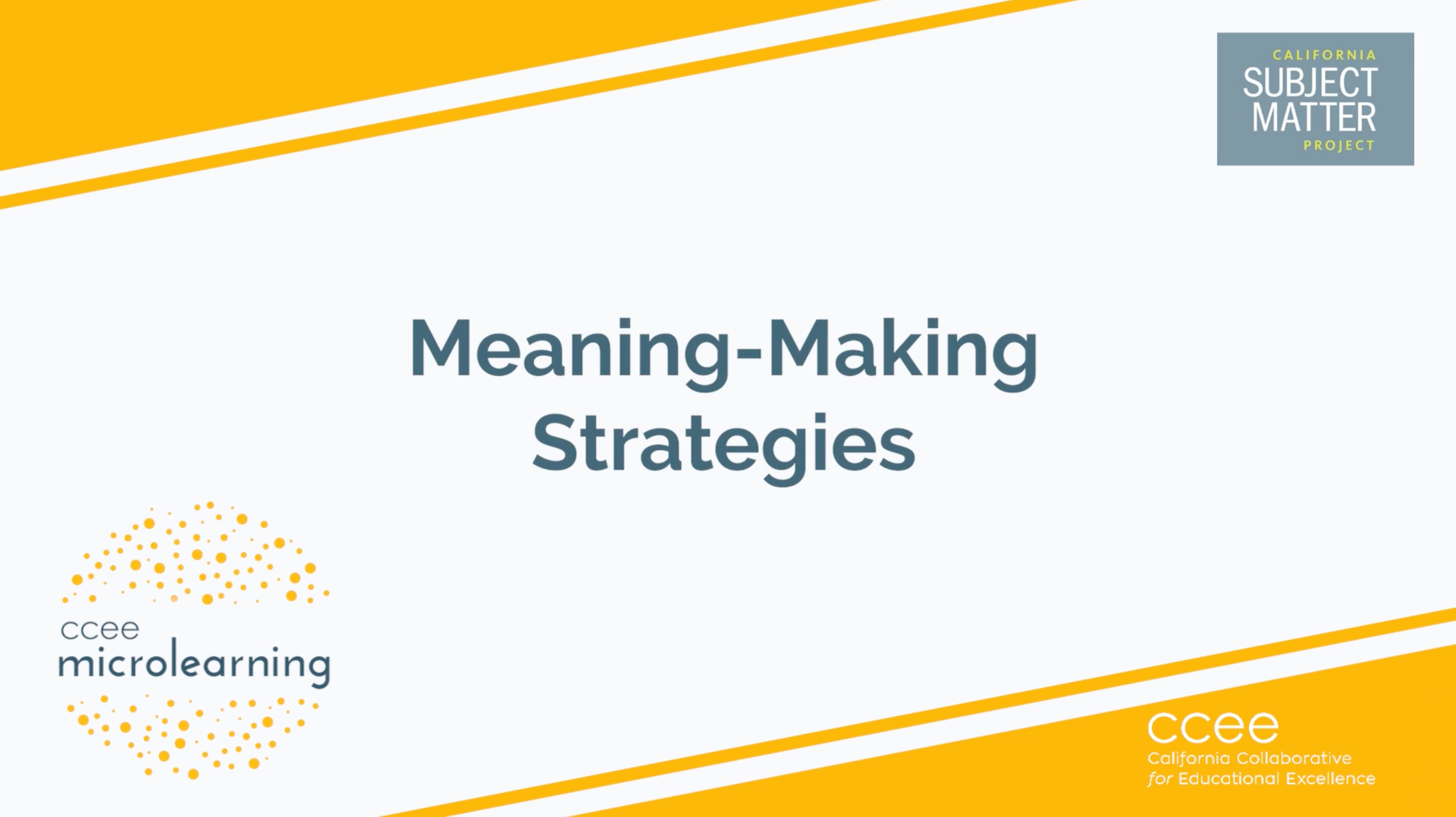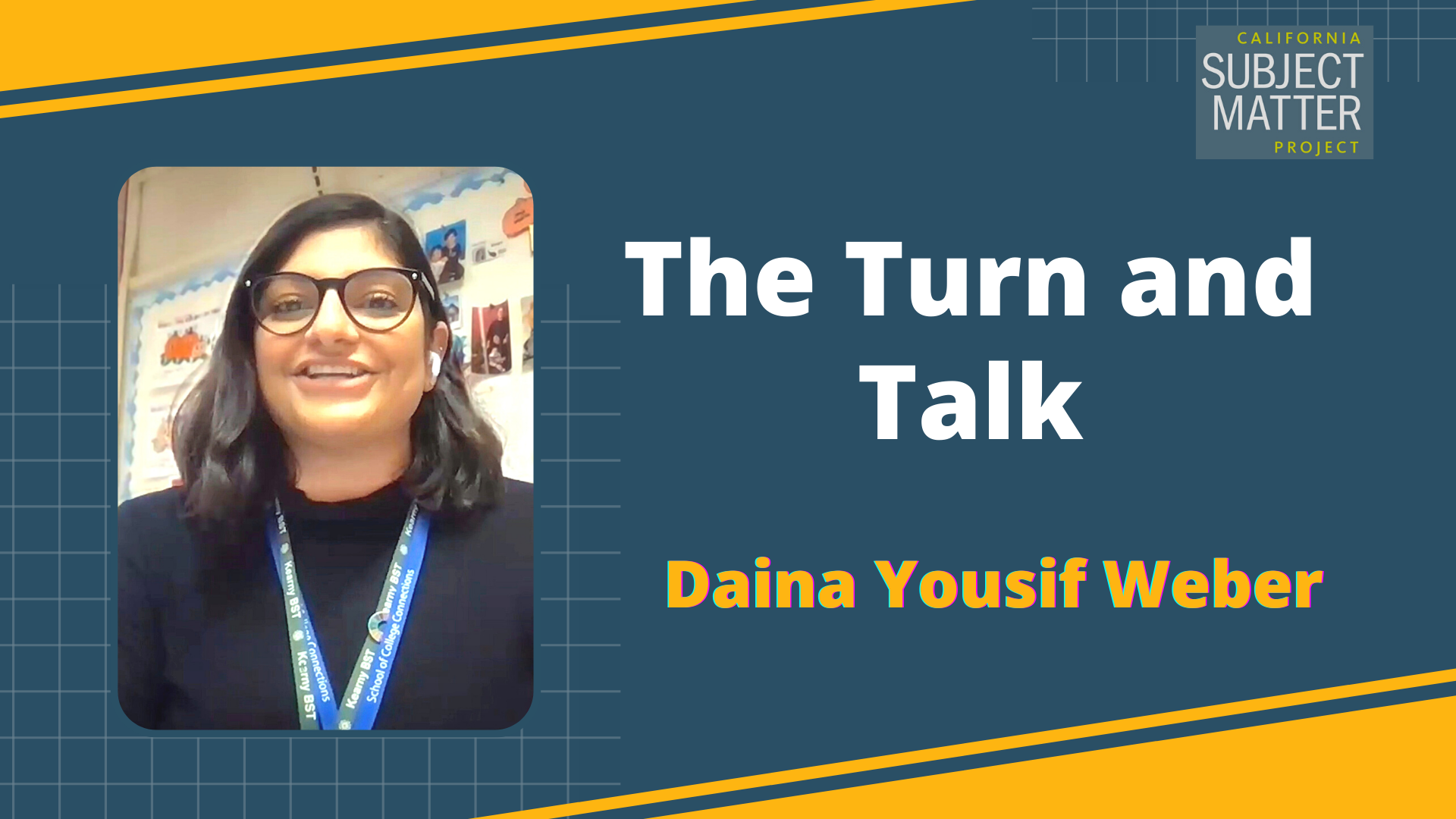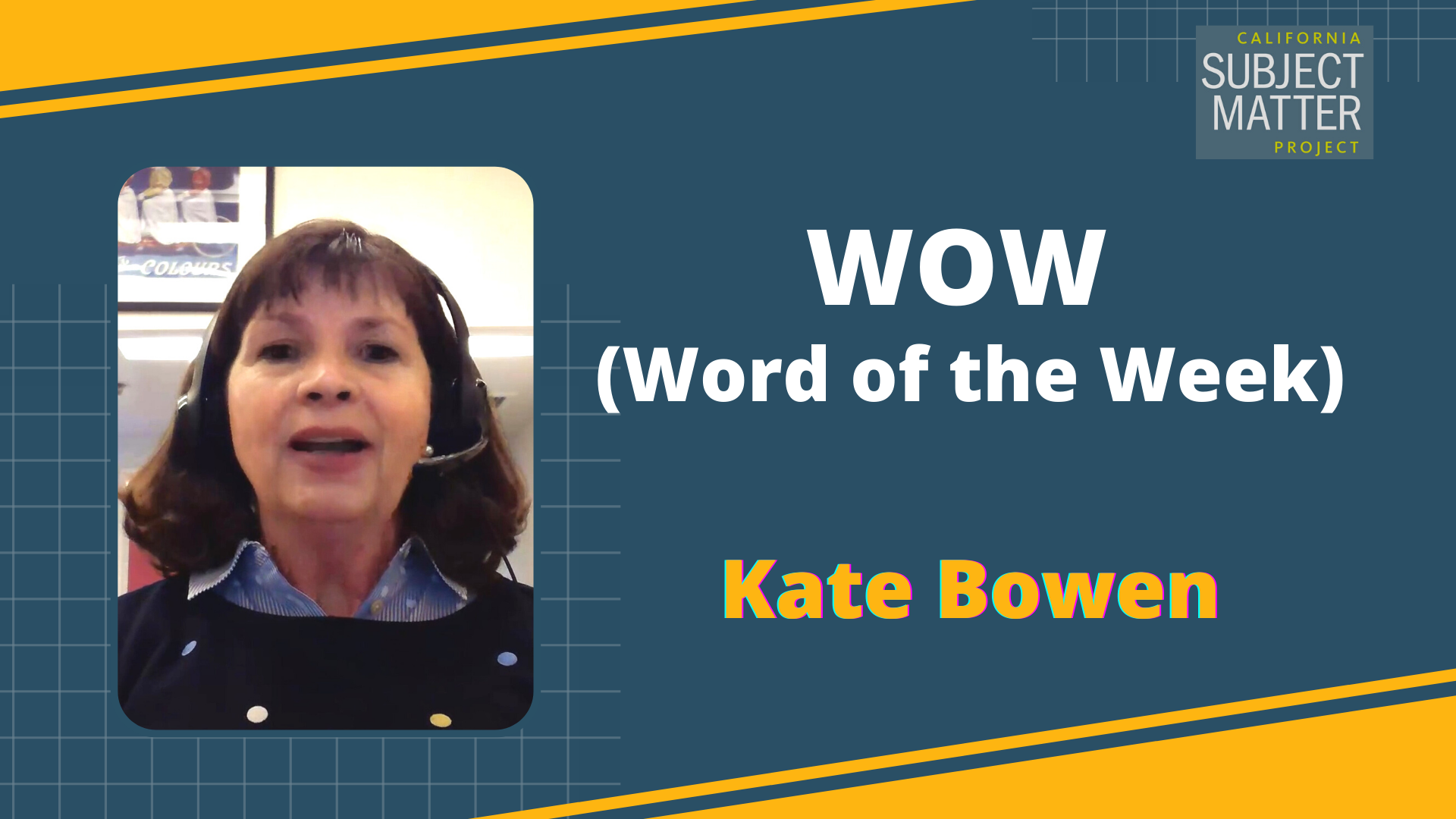Watch the Video
Presenter
Jan Ferrer is a MTSS TOSA at Goleta Valley Junior High, Santa Barbara Unified School District in Santa Barbara, California.
Transcript
Hello, my name is Jan Ferrer and I am a teacher at Goleta Valley Junior High and a teacher consultant of the California Writing Project. Today I’d like to speak to you about an instructional routine called “Think-Pair-Share.” Think-Pair-Share is a discussion technique that gives students a chance to formulate their own thoughts to a question before they have a chance to talk about it with a partner, and then eventually the whole class.
Teachers should be watching this video for Think-Pair-Share for a few reasons:
One: it encourages active engagement since you’re giving students a chance to think to themselves before talking to a partner about it.
It fosters that collaboration piece because students have a chance to talk to their partner before checking in with the rest of the class.
It promotes critical thinking.
It supports different learning styles.
And it increases student confidence because students have a chance to practice their response with a partner before then sharing it with the class.
This activity is really flexible and it can be used in all grade levels. It can be used in all subjects. It can be modified to fit all class sizes because, if you have a small class, you can have students share with one partner if you have a larger class and more students can manage, students can get in small groups of three or four. And it also works in different settings, including the traditional classroom where students can turn and talk to one another, but also in the virtual classroom because you can use the breakout rooms feature to pair students up and then bring students back to the main classroom.
The way this routine works is that first a teacher would pose a question or a problem to the class, and they would ask the student to really think about the question quietly to themselves. This part is really important because the students need some time to think about the response by themselves and quietly before they can go ahead and share with a partner.
After students have about thirty seconds or so to think about the question, or maybe up to two minutes if the question is more complex, then they would turn to a partner, usually the person sitting next to them, or sometimes we call it an elbow partner, and they would take turns sharing their response with one another. After about one to two minutes of sharing their response, then the teacher would bring the class together and call on students to share their responses so that the rest of the class can hear it.
Once you get comfortable with the Think-Pair-Share routine, know that there are many variations out there, including Think-Ink-Pair-Share and Think-Pair-Share What You Heard.
Some things to watch for is that you want to make sure that you ask students something beyond just a Yes or No question. If the answer is simple, then students will think to themselves, “why did I need that thinking time?” Or, “why do I have to share my response with somebody else? It’s a simple Yes or No”, but if it’s a question that requires students to really think about and explain their thinking, then the Think-Pair-Share portions of this routine will really have that buy-in.
Another thing to watch for is to make sure you’re giving each of the three portions time. It doesn’t have to be equal time, but you want to make sure students have time to think and formulate a thoughtful response. You want to make sure they have a chance to share with one partner before going to the large group, and then want to make sure that you hear from the large group so that students feel that accountability and knowing that the conversations they have and the responses they think of are going to go out to a wider audience.
I want to thank you for watching. By incorporating this routine into your lessons, you can create a more engaging and collaborative learning environment for your students. You got this!
Accompanying Materials & Resources
- Quick Guide: Think-Pair-Share (PDF – 1 Page)
- Think-Pair-Share One-Pager (Google Doc)
- Think-Pair-Share One-Pager (PDF)
- Think-Pair-Share Accountability Template (Google Doc)
- Think-Pair-Share Accountability Template (PDF)
- Think-Pair-Share Slides (Google Slide)
- Think-Pair-Share Slides (Powerpoint)



